The exoplanet imager SPHERE (Spectro-Polarimetric High-Contrast Exo-planet REsearch) [1], currently installed and operating at the ESO Very Large Telescope in Chile, is dedicated to the detection and characterization of giant exoplanets and circumstellar disks around stars close to the Sun.
This project represents a scientific, technological and human adventure that began some twenty years ago.
Its success was built on strict instrumental constraints and innovative technical developments, such as extreme adaptive optics, coronography, high precision polarimetry and integral field spectroscopy.
The different subsystems of SPHERE have been designed, built and integrated by a consortium of twelve major European institutes over more than a decade, allowing it to reach unmatched performances on the sky.
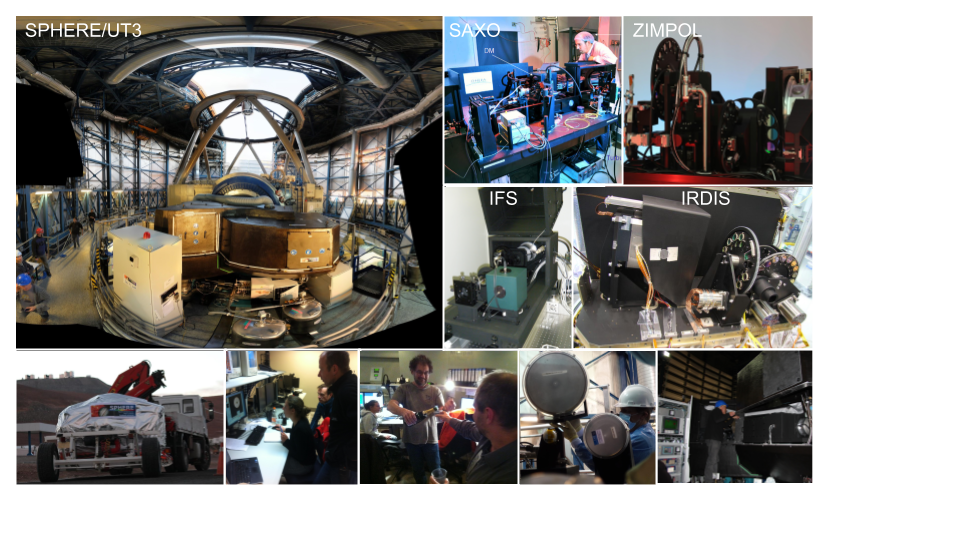
After its first light in May 2014, SPHERE was offered to the European community, and quickly obtained outstanding scientific results in the field of planetary formation, demography and physical properties of exoplanets, but also on the characterization of minor bodies of the Solar System, the environment of evolved stars, and even the study of active galactic nuclei.
The SPHERE epic at Paris Observatory - PSL
| May 26, 2020 | 
|
Remise du Grand Prix scientifique de la Fondation Charles Defforey |
| February 14, 2020 | 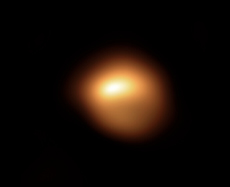
|
L’affaiblissement de l’étoile Bételgeuse en image |
| July 10, 2018 | 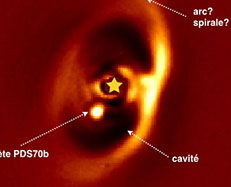
|
SPHERE découvre sa première protoplanète |
| June 15, 2018 | 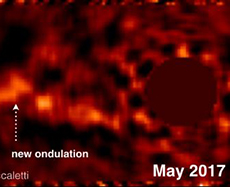
|
AU Microscopii et ses mystérieuses ondulations… |
| July 7, 2017 | 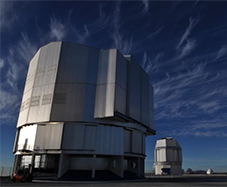
|
Première découverte d’une exoplanète pour SPHERE |
| November 17, 2016 | 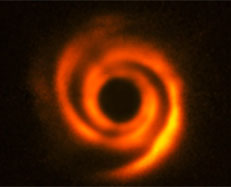
|
SPHERE donne des images haute résolution de disques protoplanétaires |
| November 24, 2015 | 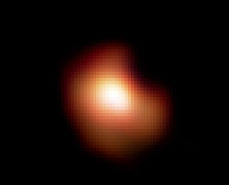
|
Première image visible de la surface d’une étoile autre que le Soleil |
| October 8, 2015 | 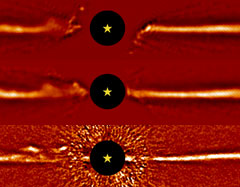
|
Découverte de mystérieuses ondulations au travers d’un disque de poussière |
| June 22, 2015 | 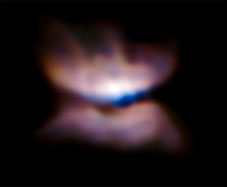
|
SPHERE dévoile les prémices de la formation d’une nébuleuse planétaire |
| June 6, 2014 | 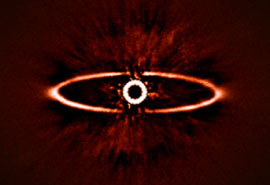
|
Première lumière de SPHERE, imageur d’exoplanètes |
The SPHERE consortium
The SPHERE consortium has played a major role in this success and is celebrating today the publication of a series of three papers in the journal Astronomy & Astrophysics presenting the first phase of the demographic study of exoplanets beyond 10, i.e. beyond the orbit of Saturn, including its hundredth scientific publication.
This work represents a major milestone for the SPHERE consortium made possible by the investment of all the members and institutes that have successfully contributed to this project, from the design and construction phase to the scientific exploitation phase over the last five years.
The SPHERE project has allowed the training of a new generation of young engineers and scientists and positions our European teams at the forefront of this major field of astrophysics.
Thanks to all the work carried out by the SPHERE consortium, the associated community will be at the forefront of high contrast imaging developments to prepare the exploitation of future ground-based projects on the class of large telescopes from 10 to 40 m.

For the French part, the SPHERE consortium is composed by the following laboratories :
- the Institut de Planétologie et d’Astrophysique de Grenoble (IPAG),
- the Laboratoire d’Astrophysique de Marseille (LAM),
- the Office National d’Études et de Recherches Aérospatiales (ONERA),
- the Laboratoire d’Études Spatiales et d’Instrumentation en Astrophysique (LESIA) at the Observatoire de Paris - PSL,
- the Lagrange laboratory at the Observatoire de la Cote d’Azur.
Contributions of LESIA to the Observatoire de Paris - PSL
Instrumental contributions
LESIA led the development of the coronagraphic suite, and contributed to the numerical simulations of the instrument in collaboration with Lagrange.
The LESIA team also contributed with ONERA to the SAXO adaptive optics system, by providing a tip-tilt mirror and a position sensor, as well as the specifications and tests of the real-time computer.
LESIA also hosted the SAXO tests in a clean room.
Scientific exploitation
Since the first light in 2014, our team has been heavily involved in scientific exploitation and data reduction.
At LESIA, the main contributors are : A. Boccaletti, P. Baudoz, J. Baudrand, G. Rousset, R. Galicher, J. T. Buey, A. Sévin, P. Gigan, D. Perret, M. Marteaud, J.-M. Réess.
Centieth publication of the SPHERE consortium
- Langlois, Gratton, Lagrange, Delorme, Boccaletti et al., A&A (2021), arXiv.2103.03976 : The SPHERE infrared survey for exoplanets (SHINE) : II- Observations, Data reduction and analysis, Detection performances and early-results.
Paper-I : https://arxiv.org/abs/2103.04366
Paper-II : https://arxiv.org/abs/2103.03976
Paper-III : https://arxiv.org/abs/2007.06573
_________________________________________________________________
[1] SPHERE for Spectro-Polarimetric High-contrast Exo-planet REsearch], https://sphere. osug.fr/
